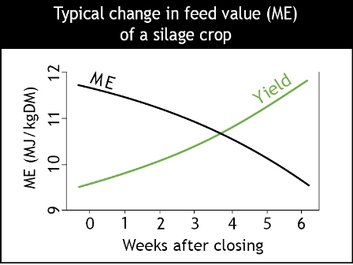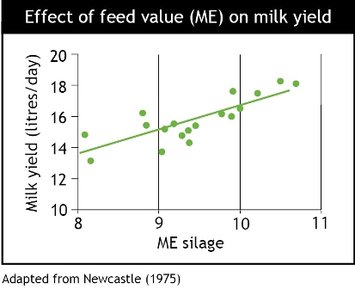Silage
Making silage is a balance – when you close a paddock, yield increases but quality drops. For quality silage make light crops. Light crops also significantly improve pasture regrowth, density and persistence.
How important is silage quality?
Quality may not be important for feeding stock on a maintenance diet. But for supplementing milking cows, or for growing young stock, quality is essential.
Making quality silage
Lighter crops, harvested earlier, produce better silage. For best ME, cut pastures before they reach a yield of 4 t DM/ha (i.e. harvest about 1.5-2.5 t DM/ha). Paddocks cut earlier also regrow much faster and are available for grazing earlier than those that are not.
Using later heading ryegrasses can help silage ME, because these better maintain pasture quality in late spring. Note: cut paddocks in the afternoon, as this is when the WSC percentage is greatest in the plant.
Rate of pasture quality loss
Leafy spring pasture has an ME of 12 or more. As soon as the yield increases past 3500 kg DM/ha, quality decreases.
Pastures that are not cut before 4 t DM/ha can lose 1 ME unit every two to three weeks, as stems, seed heads and dead matter increase.

Effect of silage quality
Silage quality has a direct effect on dairy cow milk production, as shown in the graph opposite. Quality also dramatically effects LWG in young stock.

Why do you get poor silage?
Survey work has shown NZ farmers are generally good at what happens after cutting (stacking, compacting, covering etc.). The biggest reason for poor silage is making it from poor quality pasture, simply cut too late.
Another reason is weather conditions. If made in good conditions, pasture typically loses maybe 0.5 ME unit through ensiling. Rain can increase this loss.
Nitrogen fertiliser
Applying nitrogen fertiliser after the paddock has been taken out of the grazing rotation for silage production can help increase growth rates, so the paddock is available for grazing again sooner.
Fertiliser application after cutting is also recommended, as large amounts of nitrogen and potassium in particular, are removed in the silage.

